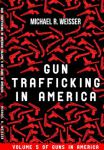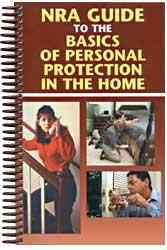I want to commend the Brady Center for their newly-issued report on suicide and guns. It’s available on the Brady website and should, no must be required reading for everyone involved with gun violence at any level: advocates, researchers, caregivers and the general public. I downloaded it earlier this evening and read it without stopping from end to end. Then I read it again. Bravo Brady for a job very well done.
The report was issued for National Suicide Week and I wish I could say that suicides as a public health issue have been brought under control. Unfortunately, that’s not true. According to the CDC, the suicide rate per 100,000 was 10.44 in 2000, it was 12.57 in 2013 (the last year for which we have validated numbers.) These rates translate into 29,350 suicide deaths in 2000 and more than 41,000 in 2013. Worse, it appears that this increase is directly associated with the use of guns, with the gun suicide rate increasing by 13% over the past seven years.
 Wouldn’t you just know it, but the NRA has a a history of being concerned with guns and suicide, except in the case of America’s oldest civil rights organization, their concern takes the form of preventing efforts to identify individuals who might be at risk to use a gun to take their own lives. The best example of their concern in his regard is the Florida gag order (Docs vs. Glocks) that prohibits physicians from talking to patients about their ownership of guns. The law makes an exception in cases where the patient might be an ‘imminent’ threat to himself or someone else, but as the Brady report makes clear, most suicides are impulsive, last-minute affairs and it often takes lots of sensitive sifting of verbal cues by a caregiver before the potential victim acknowledges that suicide is on his mind.
Wouldn’t you just know it, but the NRA has a a history of being concerned with guns and suicide, except in the case of America’s oldest civil rights organization, their concern takes the form of preventing efforts to identify individuals who might be at risk to use a gun to take their own lives. The best example of their concern in his regard is the Florida gag order (Docs vs. Glocks) that prohibits physicians from talking to patients about their ownership of guns. The law makes an exception in cases where the patient might be an ‘imminent’ threat to himself or someone else, but as the Brady report makes clear, most suicides are impulsive, last-minute affairs and it often takes lots of sensitive sifting of verbal cues by a caregiver before the potential victim acknowledges that suicide is on his mind.
Where the NRA really shows its true concerns about suicide is their efforts to keep any discussion about gun suicide in the military completely out of bounds. Military suicides have nearly doubled over the past ten years and the military suicide rate per 100,000 is nearly 40% higher than the rate for non-military folks. In 2011 a provision was quietly tacked onto the annual Military Authorization Bill that prevented any soldier from being asked if he kept a gun in an off-base home. Meanwhile a study done in Israel (and mentioned in the Brady report) showed a 40% drop in at-home suicides by soldiers when they were no longer allowed to take their guns with them when they went home on a weekend pass.
One of the most pernicious strategies employed of late by the NRA is guns on college campuses, traditionally gun-free zones. The latest battleground – where else? – is Florida, where NRA lobbyist Marion Hammer has the troops all set and ready to march into the State House and promote a campus-carry bill again. The fact that college dormitories are the most popular sites for mass, binge-drinking activities doesn’t faze crazy Granny Hammer one bit. But here’s one little piece of data from the Brady report that might give some of the Florida legislators pause. A recent study found that college students had substantially lower suicide rates than kids in the same age bracket who weren’t in school, a difference partly attributed to a ninefold decrease in gun availability on campus as opposed to guns in private homes.
The truth is the NRA couldn’t care less about what’s in the Brady report. I can just hear it in the next couple of days, ‘It’s not gun violence, it’s mental health.’ They’ve been getting away with this nonsense because mental health has always been a touchy issue and suicide, in particular, is something we’d rather not face. But the Brady report makes it clear that suicide moves more quickly move from potential to actual when there’s a gun around. In case you haven’t yet figured it out, It’s the gun stupid, it’s the gun.





Recent Comments